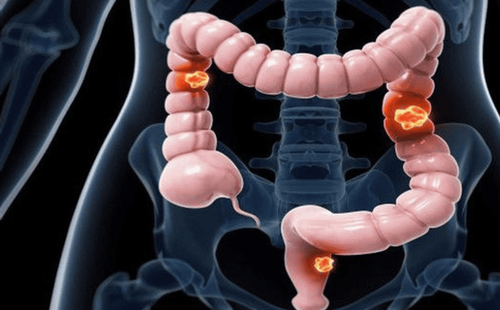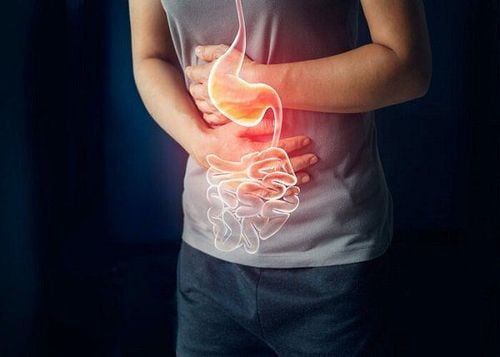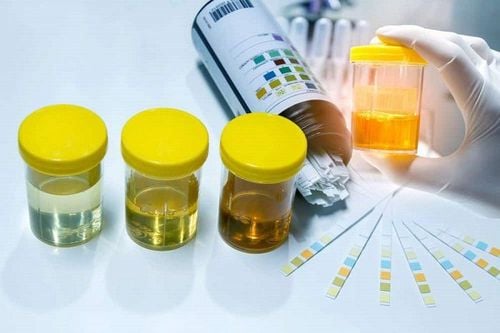This is an automatically translated article.
The article was written by Specialist Doctor I Nguyen Thi Minh Thuyen - Pathologist, Pathology Department - Vinmec Danang International General Hospital.Several tests may be used to screen for colorectal cancer. These tests can be divided into two main groups as stool-based tests and vision-based tests. These tests all have different advantages and disadvantages.
1. Stool tests
These tests check the stool for signs of cancer, are minimally invasive, and easy to perform.1.1 Test for occult blood in stool
These tests analyze stool for possible signs of colorectal cancer (or polyps). These tests are easy to do, can be done at home, but need to be done more often (yearly). And if stool results are positive (abnormal), you'll still need a colonoscopy for further evaluation.1.2 Stool DNA test
Cancer cells or polyps often have DNA mutations in certain genes. Stool DNA test to look for certain DNA abnormalities from cancer cells or polyps.
This test should be done every 3 years. If the test is positive, endoscopy is still required.

Xét nghiệm tìm máu ẩn trong phân nhằm tìm dấu hiệu ung thư đại trực tràng
2. Visual tests (structure)
Vision-based (structural) tests: These tests look at the structure of the colon for abnormalities, done with a laparoscope (a flexible tube-shaped instrument with a small video camera and mild) or with special imaging (X-ray) tests.
2.1 Colonoscopy
For this test, the doctor looks at the entire length of the colon and rectum with a laparoscope - a portable, finger-sized tube with a small, light video camera on the end. The tube is inserted through the anus into the rectum and colon. Special instruments can be passed through the endoscope to biopsies (take a specimen) of any suspected lesion.
2.1.1 Preparation for screening
Make sure your doctor knows about any medications you are taking (including aspirin, vitamins, or supplements), and may need to change your medication regimen before your colonoscopy. The colon and rectum must be empty and clean so that the doctor can see the entire inner lining (mucosa) during the colonoscopy. You may need to drink a large amount of liquid laxative the night before the procedure, and have several bowel movements. You may also be asked not to eat or drink anything for a certain amount of time the night before your colonoscopy.
2.1.2 During endoscopy
The procedure usually takes about 30 minutes, but it may take longer if one or more polyps are found and need to be removed. During the procedure, you will be asked to lie on your side with your knees pulled up, covered with sheets. Your blood pressure, heart rate, and breathing will be monitored during and after the procedure. The doctor also inserts air into the colon through the endoscope to make it easier to see the lining of the colon and uses instruments to perform the procedure. The doctor will look at the innermost layer of the colon, if you see small, large polyps or tumors, or any abnormal lesions, the doctor will remove the whole polyp or biopsy the suspicious areas and send it to the doctor. pathology lab to check if it's benign, cancerous, or something else.
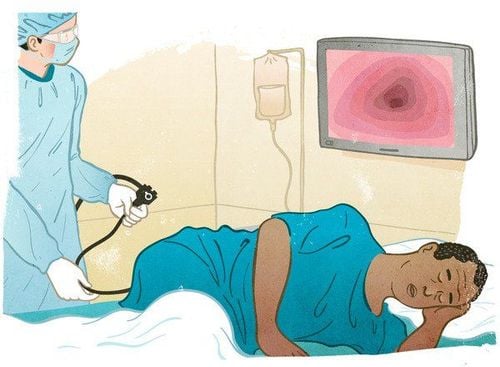
Bệnh nhân nội soi đại tràng được yêu cầu nằm nghiêng với đầu gối được kéo lên
2.1.3 Possible side effects and complications
The bowel preparation before the colonoscopy can be uncomfortable. Air is pumped into the intestines during the procedure, people sometimes feel bloated, sore, or have cramps for a while after the procedure until the air is out. If the polyps were removed or biopsied during the colonoscopy, you may see some blood in your stool for a day or two after the colonoscopy. Symptoms may include severe abdominal pain, nausea, and vomiting. This can be a dangerous complication as it can lead to infection. The perforation may require surgery. Ask your doctor about the risk of this complication.
2.2 Colonoscopy (virtual endoscopy)
CT scans use X-rays , but instead of taking one picture like a regular X-ray, the CT scanner takes multiple pictures while you lie on the table. A computer then combines these images into detailed images of each body part
This test can be especially helpful for some people who can't or don't want to do more invasive testing (like Endoscopic). CT can be done fairly quickly, and doesn't require sedation.
Although this test is not as invasive as endoscopy, preparation is still needed prior to the scan. If polyps or suspicious lesions are detected, endoscopy is still required for biopsies and full evaluation.
2.2.1 Preparation before shooting
It is important that the colon and rectum are emptied before the scan to get the best picture. Bowel preparation before CT scan is the same as before colonoscopy.
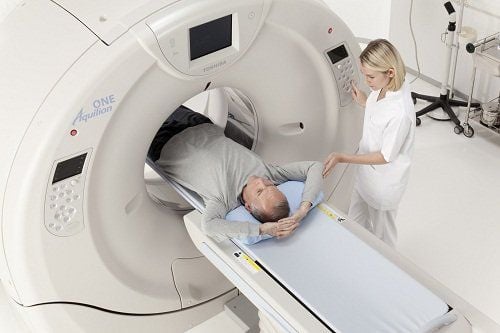
Chụp cắt lớp vi tính là kỹ thuật an toàn, không xâm lấn
2.2.2 During shooting
This test is done in a special room with a CT scanner and takes about 10 minutes. You may be asked to drink a contrast solution before the scan to help your doctor see better. You will lie on a narrow table (part of a CT machine), and a small, portable tube will be inserted into your rectum. Air is pumped through the tube into the rectum and colon for better enlargement and visualization. You will then slide into the CT scanner and you will be asked to hold your breath for about 15 seconds. You may be asked to change the position of the shot (lying on your back, on your stomach, or on your side).
2.2.3 Possible side effects and complications:
Usually a CT scan has fewer side effects than a colonoscopy. You may feel bloated or cramping because of the air in your colon and rectum, but it should go away as the air leaves your body. There is a very small risk that the air can injure or puncture the intestines, but this risk is thought to be much less than with a colonoscopy. Like other types of CT scans, this technique contains a small amount of radiation. All questions need to be answered by a specialist doctor as well as customers wishing to be examined and treated at Vinmec International General Hospital. The hospital provides customers with cancer screening packages: Lung cancer screening package, Breast cancer screening package, Stomach cancer screening package, Colon cancer screening package ... to help customers proactively check health and prevent cancer.
Customers can contact Vinmec Health System nationwide or register online HERE.
The article references the source: American Cancer Society
MORE:
What are the ways to screen for colorectal cancer? Diagnostic measures for colon cancer The role of colon biopsy in the diagnosis of colon cancer





